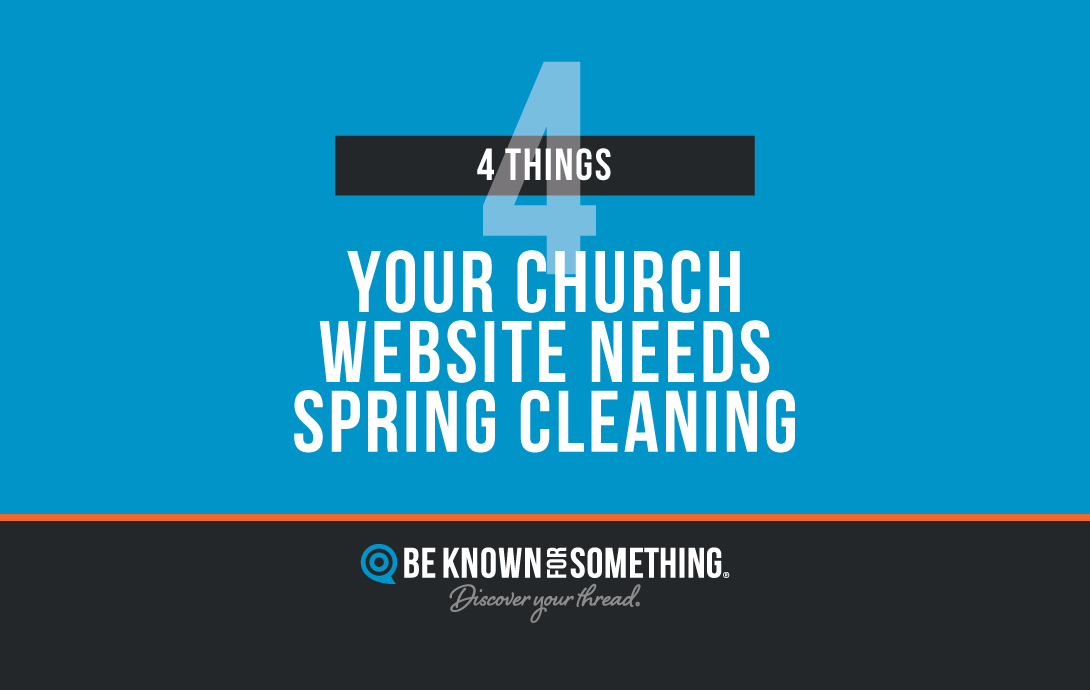Your Church Website needs Spring Cleaning (4 Things)

It’s website spring cleaning time! Like the way we do for our house when the weather warms and the showers arrive to clean the winter grime. So much needs attention even after a few months!
Your church website has probably also picked up a ton of content over the fall ministry launches, Christmas busyness, and the “new year new you” ministry refresh. And since the website is where people should turn for church information, you need to give it attention. Website spring cleaning! Especially since Easter is on its way and your congregation and community view that season as a time for renewal.
Want to give your URL a deep website spring cleaning but don’t know where to start? Here are 4 things to get you started. These will handle the foundational, most-desired areas.
- Backup and update. Your website is many files housed on a hosting computer with world-wide web access. Protect your files! Most hosts allow backups of the files into a zip folder you can store on your computer. Why? If something goes wrong as you do the next 3 website spring cleaning processes, you can always restore to backup. A safety thing. After you backup, look around your website dashboard for areas requiring updating (plugins and CMS). Be cautious. Start with plugins and then do CMS (ie. WordPress) ensuring plugins are approved for the latest CMS updates.
- Organization. Look at your website with fresh eyes. Think of it as a filing cabinet with content your community and congregation needs to know. Your main menu is the main filing drawers. Ensure you don’t have too many or it’ll feel confusing. Web paradigm says the first tab should be “About” and the last should be “Contact”. The other 4 or 5 in between need to allow everyone to discover everything you do in ministry. Options? Serve, Ministries, Missions, Events, Watch, Resources, Calendar, or Give.
- Improve calendar functionality. There are 2 types of web content: static and dynamic. Static requires adding content and it remains until you remove or change it. Dynamic allows adding content into a dashboard and have it “magically” get added to other pages. This functionality improves user experience so they can get a customized feeling from the website. Concentrate on your calendar dynamic content as part of your website spring cleaning as much as the CMS system allows. Options? Calendars with filterable events and filtered events distributed to appropriate ministry pages.
- Update your staff page. Your “About” tab needs an easy way for your community to see what your leadership looks like. The community uses the staff pictures to understand if they’ll belong. So make sure the pictures are current and friendly. Only show what you risk being judged about (i.e. head/shoulders rather than whole body). Make pictures consistent so no one person stands out. And the staff, team, or leadership page should also have an easy way to identify who’s in charge of ministries and give the congregation an easy way to contact them (email link or clickable phone number).
Want 25 Game-Changing Resolutions?
Related Posts

True thankfulness: communicating gratitude that connects
We’re just a couple weeks away from Thanksgiving. Though you might not know it by the jingling commercials already flooding

AI Prompts Every Church Communicator Should Be Using
Artificial Intelligence (AI) isn’t replacing church communicators, it’s simply helping the good ones work smarter. Tools like ChatGPT (and similar)

Church Growth Strategy: Clarity That Connects
Most churches pray for growth but overlook one of their most effective tools: a clear church growth strategy built on


